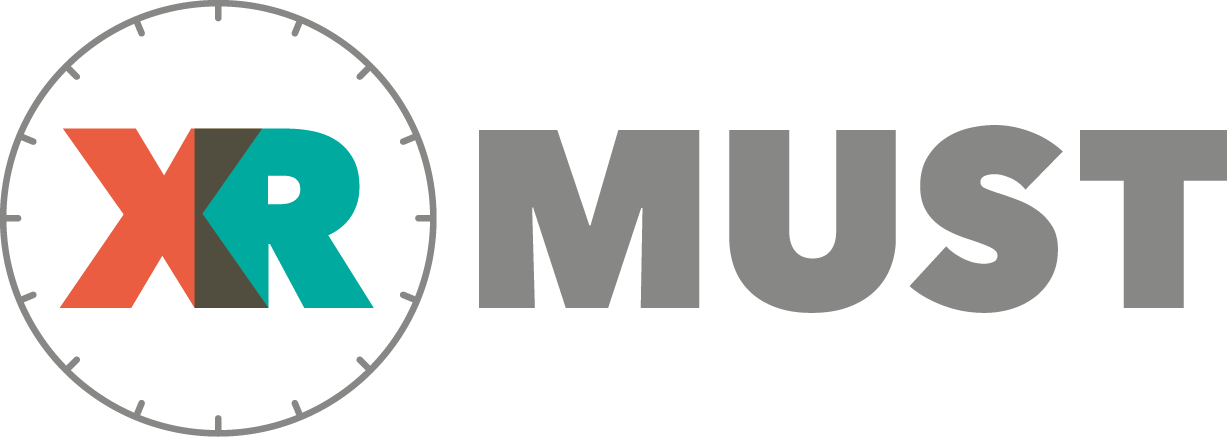The metaverse is not dead (nor is VR, for that matter). Proof if it were needed that virtual worlds exist and are gaining momentum after two years of global ‘buzz’ that did little for the industry’s development. Despite some pessimistic signs last year, and the closure of several independent platforms, the interest in virtual worlds remains persistent. Whether for training, events or creative work, there are many areas of interest. Take Arrival.Space, a European initiative, and its co-founder Lisa Maria Egger.
Cover: XR Women session @ Arrival.Space
Current news for Arrival.Space: AUREA Awards in Germany, and The Polys Awards.
From film producing to virtual worlds
Lisa Maria Egger – I have a background in traditional film production, which I started 16 years ago. In 2016, together with my partner Gero A.E. Egger (now also co-founder with me and Thomas Richter-Trummer of Arrival.Space), we went to the Cannes Film Festival where we tried a few VR projects. And we were really amazed by the technology, and how it can be a game changer for the industry, but there was a lack of storytelling at that time. How could we do it, and produce our first cinematic 360°/VR film? We did our first project with our company GO! Pictures KG, REMAIN AT HOME, to figure it out. It was basically a very short film about a grandmother who forced her family to leave home because of war. The emotions were very real! And so we got invited to festivals worldwide to showcase the film, and meet the XR community.
We learned a lot during that time – putting headsets on hundreds of heads. Virtual Reality could convey emotions more powerfully than any previous medium. Then, the pandemic hit. Everyone was at home, and no events happened but online. We picked it up from there, collaborating on online virtual events such as Break Down These Walls with VRROOM or ANNY. We did a few 360 film screenings inside these worlds to show some 360 content (including our film), a live concert and a few social gatherings as well.

Then we went on producing XR content and presenting virtual worlds in this new context, and we learned that it was extremely difficult for people unfamiliar with XR to enter, navigate, and participate in these new experiences. The lack of accessibility and interoperability to operate these worlds, add content, and share everything easily, make it complex.
And this is where we met our co-founder Thomas Richter-Trummer, who was then working at Blackshark.ai, a company he co-founded, as Technical Director on major titles such as Microsoft Flight Simulator, leading a multidisciplinary team and developing key technology. This is how Arrival.Space started.
Arrival.Space: claim. edit. share.
For the last couple of years, producing VR experiences has been costly, then they have to be maintained and finally you would use them for one or two events at best. So, not the best deal! Immersive creation, virtual worlds and AI are becoming easier to handle now.
We do this for the community. And this is a shift for me, from content production to running a software company. It’s really about giving people the tools to create great content and share it online. We launched the Arrival.Space open beta at Stereopsia 2023 in Brussels, and continued the partnership this year.(space)Since then,the platform’s been growing! It’s really interesting to see what people are doing with it, because our platform is about creators and how they want to use it. We focused on making the platform intuitive to use with easily accessible content. And we need them to be nicely presented, so it’s visually appealing. We choose WebXR-based technology to be as accessible as possible and hardware independent. You just need to share a link to invite people around you to join on desktop, mobile and in VR.

One key point is navigation and interoperability, right? It’s not about holding people in a row, but building bridges. With Arrival.Space, you can connect to other platforms like oncyber or Frame i.e. Being mobile first is more inclusive than VR only, which is still very limited in terms of audience. The social part is one of the most important parts. Being together in the virtual space becomes more and more available, persistent, and the environment is now an open space in 3D. Creators can organise meetups, workshops, you can share creative projects etc. There is a sense of real community there.
We really tried to not limit the use cases for Arrival.space in the beginning, because we really wanted to see what people are doing with it. Evaluating use cases and their goals, along with the feedback we receive – it’s a very unique thing.. In fact, most people go and see virtual worlds, then understand them and start having ideas. I.e. We have a lot of different community hubs. We have a lot of people sharing and talking about Gaussian Splatting. It’s something very interesting in terms of storytelling, how people can scan 3D objects or environments, then upload it to their Arrival. Kind of an online 3D memory, a photo you can step inside and explore with others.
This is a good example on how we listen to the Arrival community to help them get the best of the platform. Today you can upload any 2D/3D elements to your online world, you can create a gateto other platforms or spaces of yours, invite and see other participants, browse spaces and connect… And to create your own environment, you don’t need an expert! Some people are pushing the boundaries of their Arrival with large-scale scans, and we make sure to keep them accessible to everyone.

The priority this year is to improve content discovery and monetization as well as social features – and to grow the Arrival community – a lot of interesting things are lining up.
Lots of things are possible, and we should allow ourselves to keep experimenting because there are no blueprints.
Starting an European immersive start-up
Arrival.Space is a very European project, based in Austria with strong support from European partners. Of course, we operate internationally, but most of our users are based in Europe and the US, and we are close to a lot of opportunities and industries there. As part of the VR/AR Industrial Coalition by the European Commission, we love to help and contribute to building a more open, diverse, inclusive, and safe strategy for virtual worlds in Europe.




Leave a Reply
You must be logged in to post a comment.